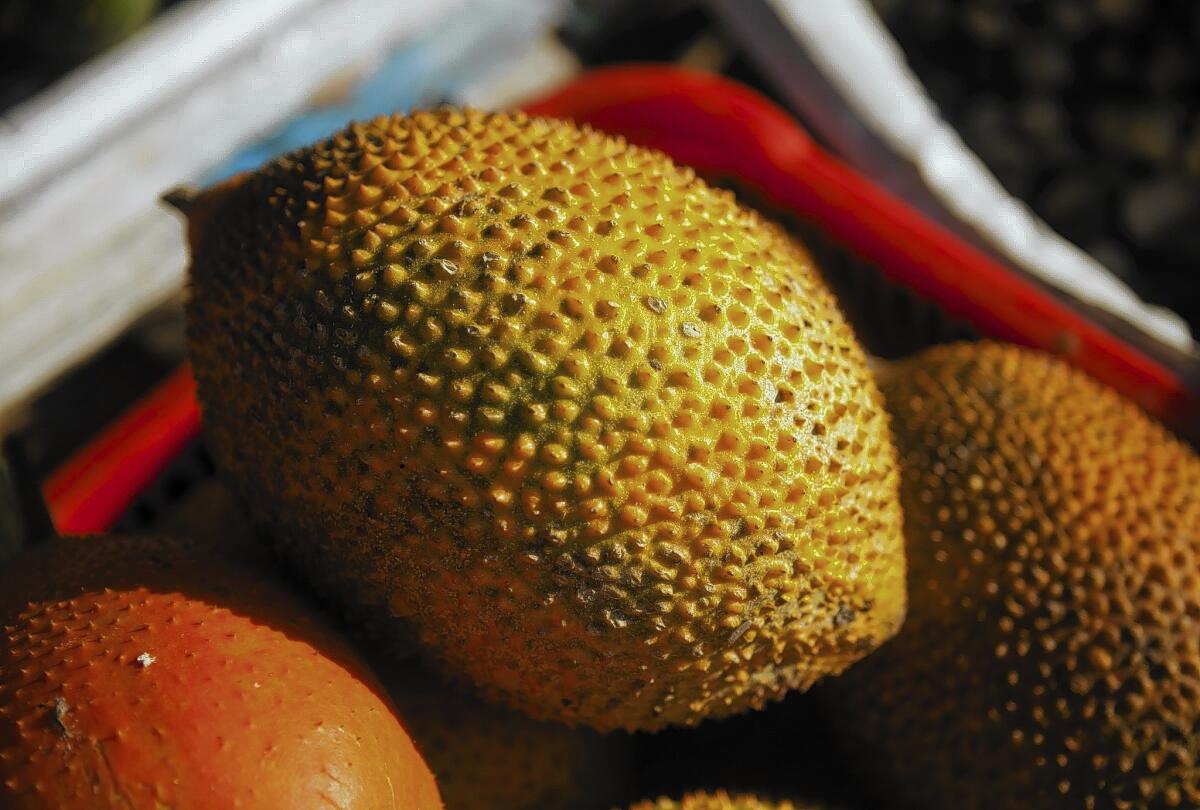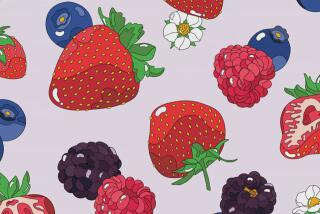Move over, acai: Latest âsuperfruitsâ aim to make a nutritional mark

Nailing down the latest superfruit in vogue can be an elusive goal, a quest largely driven by modern marketing and, quite possibly, producers of televisionâs âThe Dr. Oz Show.â Origins in advertising, not science, complicate the matter: The term âsuperfruitâ has only been used for about a decade to sell the potential health benefits of nutrient-dense fruits.
âThereâs always a âlatest and greatestâ superfruit,â said Robin Rogosin, a nutritional supplement and body care buyer for Whole Foods Market. âItâs kind of faddish, but itâs not untrue or irrelevant. To rise above the chatter, the new superfruits often have to be the subject of a recent study or featured on âDr. Ozâ â and thereâs often no rhyme or reason to what they showcase.â
Names of the often-exotic fruits seem destined more for a Scrabble board than a shopping list: Berries such as acai, goji and schizandra; pitayas, harvested from cactuses; or baobab, borne mainly of an African tree. But grade-school spellers would recognize plenty of âsuperâ staples, among them blueberries, cherries, red grapes and oranges.
Many everyday fruits can make the same nutritional claims as their âsuperâ cousins: high in nutrition and packed with disease-fighting antioxidants. They also possess eminently marketable health-related selling points such as âblackberries protect against heart diseaseâ or âpomegranates lower blood pressure.â
âThe whole superfruit trend is being driven by a movement of people, especially in California, who want to get their nutrients from foods and move away from supplements,â said David Wolfe, a nutritionist and author of âSuperfoods: The Food and Medicine of the Futureâ (2009).
Here are four vying for the latest superfruit crown:
Aronia
Rise to fame: The aronia has taken the long road to popularity in its native country. Often called the aronia berry, the close relative of the apple is actually a small pome that grew wild and was part of the North American diet when Europeans âcame over, fell in love with it and exported it to Europe,â Wolfe said. âThey are now exporting it back here.â Since at least the mid-1990s, the aronia has also been actively farmed in the U.S.
Tastes and uses: The fruit, which grows on a bush in clusters, owes its nickname â the chokeberry â to its extraordinarily tart taste. Broadly used in Europe in jams and jellies, the aronia is also found in wine, juices, tea, syrup and sauces, and sold as an extract and a supplement.
Attributes: The aronia has three times as many antioxidants as the blueberry, according to Superberries, a Nebraska company that markets the fruit. Its deep, reddish-purple hues reflect an unusually high level of anthocyanin, a pigment that has been studied for its disease-fighting qualities. The aronia is also high in vitamin C.
Gac
Rise to fame: Cultivated on vines in Southeast Asia and China, the bright-red prickly fruit has a relatively short harvest season, limiting its availability. It is poised to take off outside of Asia because of âphenomenalâ antioxidant properties, Wolfe said.
Tastes and uses: The flavor of the cantaloupe-sized gac has been described as âreminiscent of cantaloupe with hints of green melon and carrot.â Only its large seeds and the oil covering them are edible; the outer layer is toxic. Often incorporated into a sticky rice dish in Asia, gac is being marketed off the continent as a powder supplement and juice.
Attributes: By unit weight, gac has 70 times the content of the antioxidant lycopene as a tomato does, according to scientists, and 10 times the beta-carotene of carrots. Lycopene, the carotenoid responsible for the red color of the fruit, has been linked to lower risk of heart disease and macular degeneration. A 2005 study by the International Journal of Oncology also suggested that gac may inhibit the growth of some cancers.
Monk
Rise to fame: Native to China and Thailand, the melon-like fruit is named for the 13th century monks thought to have first used it. Popular in China in dried form, the fruit is making its way to U.S. stores as a natural alternative to artificial sweeteners. Its popularity stems from the awareness of stevia, another plant-based natural sweetener, Wolfe said.
Taste and uses: Monk fruit is reportedly hundreds of times sweeter than sugar and leaves less of a bitter aftertaste than stevia. Historically, dried monk fruit has been used to flavor beverages, soups and teas. As a modern-day extract, it is marketed as a no-calorie, low-glycemic sweetener for beverages and baked goods. Food manufacturers, including Chobani, are increasingly adding the extract to products.
Attributes: Known as âluo han guoâ in Chinese, the fruit has long been used in traditional Chinese medicine to treat coughs, sore throats and an array of illnesses. In cooking, monk fruit may have a future as a powder and syrup and makes âan amazing emulsifier,â Wolfe said.
Buffaloberry
Rise to fame: The tiny berry has long been a source of nutrients for Native Americans in the Great Plains. Its quirky name comes from the buffalo that shined their coats against the fruitâs shrub. The buffaloberry was recently nudged into the spotlight by a study in the Journal of Food Science that concluded its powerhouse antioxidants could make it the next big superfruit â if production can be commercialized.
Tastes and uses: The berry has a split personality, starting out tart but mysteriously turning sweet after a frost. It is eaten fresh or dried, when it resembles a raisin. The fruit is made into a sweetened beverage and turned into jams, sauces and puddings. Native Americans have used the plant and its berry to treat headaches, arthritis and other ailments.
It is also a favorite fruit of the emerging wine industry in South Dakota.
Attributes: The high-fiber berry is rich in lycopene. It also has four times the ascorbic acid, or vitamin C, of oranges, according to a study last fall in the Canadian Journal of Plant Science.
Super fruits â the action heroes of the citrus world
Aronia, Gac fruit and buffaloberry are among the newest to hit the produce aisles in select stores or take root online.
Had enough chocolate-covered strawberries or raspberries dropped into a champagne flute? Shopping for the newest super fruits isnât quite like picking a pound of apples. But if youâd like to try them, here are some sources:
Aronia: Whole Foods Market carries an aronia berry juice and the Superberries brand of the fruit in fresh-frozen form and as gummy chews. Juice concentrate, extracts and supplements can also be found on Amazon.com. Seeds to grow the hardy shrub can be mail-ordered from Raintree Nursery in Washington state, raintreenursery.com.
Gac fruit: A variety of options are carried on Amazon.com â Gac lotion, fruit powder, oil, seeds, even fresh fruit. Gac powder can be ordered from royaltropics.com.
Monk fruit: Monk Fruit in the Raw is carried by Target and Wal-Mart. Monk-fruit sweeteners and extracts can be ordered from Amazon.com. Monk fruit is also used in some Kashi and Bear Naked products, sold at many markets.
Buffaloberry: Limited commercial availability beyond the Great Plains. Seeds to grow the shrub, which thrives in poor soil, are sold at Amazon.com. Wines made from the berry can be found at prairieberry.com and strawbalewinery.com.
More to Read
Eat your way across L.A.
Get our weekly Tasting Notes newsletter for reviews, news and more.
You may occasionally receive promotional content from the Los Angeles Times.











